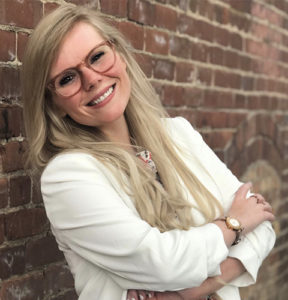
By: Rachael Andrews
The opioid crisis is the deadliest drug epidemic in American history, making it important for specialty treatment programs to accept Medicare and offer medication for opioid use disorder (OUD) treatment. Despite the epidemic, new research led by the University of Georgia revealed that the majority of Americans, especially those aged 65 and above, still lack access to quality OUD treatment.
In a newly published article in Health Affairs, researchers investigate the gaps in OUD treatment programs for those who use Medicare to pay for treatment. Specifically, authors analyzed treatment programs that offered one or more Food and Drug Administration (FDA) approved medication(s) for OUD treatment and accepted Medicare insurance as payment between 2007 and 2016.
Offering FDA approved medication treatment for OUD—methadone, buprenorphine, or naltrexone—combined with behavioral therapy is the gold standard for OUD treatment, said lead author Samantha J. Harris, a PhD candidate in the department of public administration and policy in UGA’s School of Public and International Affairs.
“Of all specialty treatment programs, less than 14 percent accepted Medicare insurance and offered buprenorphine or naltrexone treatment for OUD in 2016,” Harris said. “This is an issue because the Medicare population (adults aged 65 and up) experienced the largest increase in opioid-related overdose deaths of all population groups from 2016 to 2017.”
Specialty treatment programs are more likely to accept private insurance because reimbursement rates are generally lower for Medicare and Medicaid. Treatment programs may have a financial incentive to treat patients with private insurance or those who pay out of pocket. However, there are still those programs that accept Medicaid rather than Medicare because, as Harris points out, opioid treatment programs (programs licensed to provide methadone) have not been able to bill Medicare prior to January 2020.
“The baby boom generation, who will all be Medicare eligible by 2030, are more prone to have or develop a substance use disorder than generations past,” Harris said. “While older adults are living longer, they are sicker than prior generations. Many suffer from coexisting chronic conditions and older adults are prescribed high amounts of opioids, and are thus subject to increased risks for developing an OUD, experience an opioid-related injury, or die from an opioid overdose.”
The policy implications also present some complications. Though Medicare began covering services delivered in opioid treatment programs in January 2020, it is unlikely to significantly improve access for older adults as opioid treatment programs only represent approximately 10 percent of all specialty treatment programs. In addition, they are largely concentrated only in urban areas. “We need dramatic quality improvements in existing programs—namely increased access to FDA approved substance use disorder treatment medications across all insurance types,” Harris said.
Healthcare professionals and policymakers can prepare for the opioid crisis to get even worse in the near future, but is there a solution? Harris said that increased training in the identification and treatment of substance use disorder, increased education across the workforce, expanded telehealth services to bridge geographic access, and offering treatment medications in Federally Qualified Health Centers (FQHCs) will aid in mitigating its effect.
“Our hope is that this [research] will help shed a light on a gap in the specialty treatment system and the need for improved access to medication treatment for older adults,” she said. “The opioid crisis has devastated countless Americans and this is one opportunity to prepare on the front end. To the best of our ability, it’s important that we plan for what may come rather than wait to respond.”
Private funding makes it possible to recruit PhD students like Samantha, and you can be a part of providing that opportunity through the PADP Doctoral Fellowship Fund.
The study was published in the journal of Health Affairs and is available at https://www.healthaffairs.org/doi/full/10.1377/hlthaff.2019.00309. Co-authors include Samantha J. Harris, UGA Department of Public Administration and Policy; Amanda Abraham, UGA Department of Public Administration and Policy, Courtney Yarbrough, Emory University School of Public Health; and Christina Andrews, University of South Carolina College of Social Work.










